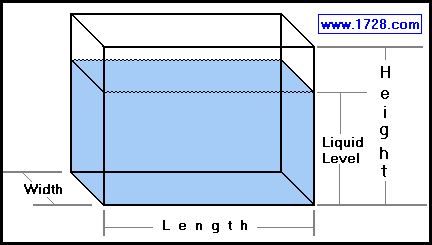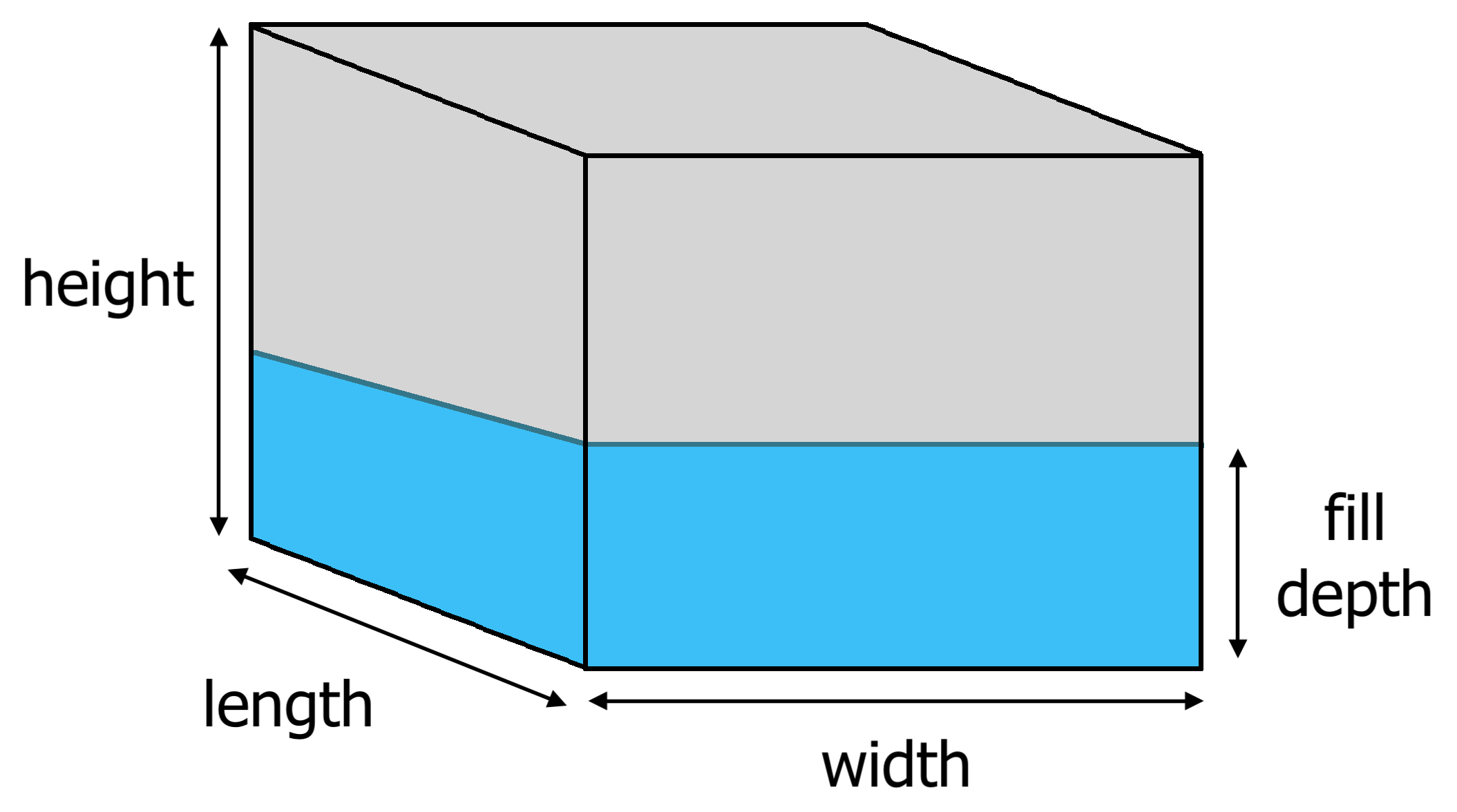

measurements, the conversion tool app is a handy reference for just about any process environment. Since many engineers and operations personnel work in a global environment switching between metric and U.S. Contact one of our experts to match a mixer to your process. Vessel Geometry, formulation, viscosity and density are just some of the other factors analyzed by Silverson engineers in matching a mixer to your process. When specifying in-tank mixers, one of the first pieces of information needed is tank volume.

Similarly finished batch volume can be worked out using the tank volume calculator. While the tank volume calculator is invaluable when sizing a mixer for a tank or specifying a tank for a particular volume, it can also be helpful on the processing floor in determining how much to fill a vessel to get a specific volume for a particular batch or formulation. Users input variables by choosing from the following:
Tank volume calculator free#
We have L = 15, A = 3, B = 4, and h = 2, since we must convert inches to feet.Bringing more solutions and flexibility to their customer base, Silverson introduces a free smartphone app – a tank volume calculator – that can be used to determine the volume of almost any vertical tank, based on varying parameters. The tank is filled with water to a depth of 24 inches. This gives you the elliptical area formula (pi/4) AB, and the elliptical tank volume formula (pi/4) ABL.Įxample: Suppose an elliptical tank is 15 feet long, and 4 feet wide, and 3 feet tall when laid on its side. To find the maximum area or maximum volume in the tank, set h = A, that is, set the height of the liquid equal to the height of the tank. If the tank has a length of L, then the corresponding volume formula is simply: If the height of the tank is A, the width of the tank B, and the height of the elliptical segment h then the area of the segment is given by the equation:Īrea = ( AB/4), The good news about calculating the area of an elliptical segment is that it doesn't matter if the oval is tall and skinny or flat and wide, or if the water level is less than half or more than half of the tank's height-one equation covers every case. You can reference the equation given below, or use the convenient tank volume and area calculator on the left. To compute the volume, you must find the area of the cross-sectional shape (an elliptical segment) and then multiply it by the length of the tank.Ĭomputing the area of an ellipse segment is easy so long as you know the tank's dimensions, the height of the segment, and of course the right area formula. One of the most commonly encountered math problem in tank geometry is figuring the volume of water in a partially filled tank that rests on its side. Many industrial storage tanks are in the shape of elliptical cylinders, for instance, oil tankers.


 0 kommentar(er)
0 kommentar(er)
